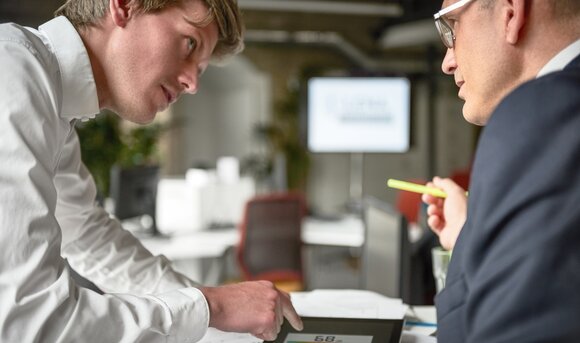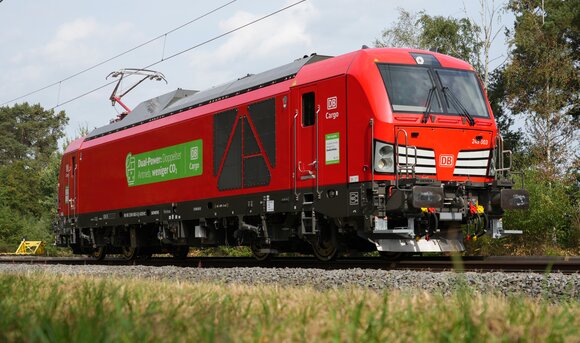Sustainable mobility needs innovative and forward-looking technologies. The Deutsche Bahn is therefore researching and developing green solutions for the transport of tomorrow with the aim of making products and services even more climate-friendly and further reducing the carbon footprint. Together with partners from research and industry, the goal is to turn fiction into reality.
The ammonia-hydrogen engine for green propulsion
Deutsche Bahn will be climate neutral by 2040. However, since renewable power cannot be used to transport freight and passengers to every destination, DB is currently working on green solutions to run the existing diesel fleet. To this end, DB is collaborating with the Australian energy group Fortescue Future Industries (FFI) on a research project to develop a new drive technology, namely the ammonia-hydrogen engine.
The ammonia-hydrogen engine is based on an existing type of internal combustion engine modified to run on green ammonia and green hydrogen produced from renewable energy sources. The advantage of an ammonia-hydrogen engine over a pure hydrogen engine is that liquid ammonia has a higher energy density per volume than liquid hydrogen, which, in turn, delivers greater ranges. Liquid ammonia is also easier to transport and store.
The key enabling technology of the new engine is a cracker from the Stuttgart-based company Ammonigy, which is installed directly on the vehicle and splits a small part of the ammonia outside the engine into hydrogen and nitrogen. The resulting hydrogen is then mixed with the remaining ammonia as an ignition gas. A first prototype of the engine for rail vehicles is currently being tested on an engine test rig. Together with partners, Deutsche Bahn will continue to develop this technology by putting the engine through its paces with endurance tests and emission measurements.
Since the availability of green ammonia and green hydrogen is still limited, DB is also working within the scope of the project to expand global supply chains of both energy sources. As a hydrogen producer, FFI wishes to sell the energy source worldwide in the future in the form of green ammonia. Deutsche Bahn is also testing a variety of solutions for the use of hydrogen. Therefore DB could potentially become a high-consumption user of both in the future.
Strong logistics for green hydrogen
In addition to DB, many other companies are similarly looking to rely ever more on this innovative source of energy. It is therefore becoming increasingly important to have safe and effective transportation routes. With this in mind, DB Cargo, Europe's largest rail freight company, is developing efficient and green logistics concepts for the transport of hydrogen and hydrogen derivatives.
Whether the hydrogen is in liquid or gas form, DB Cargo already offers suitable solutions for climate-friendly transport by rail, thanks to its container and tank car products and its partnerships with various energy suppliers. Chemically bound hydrogen can be transported in tank cars commonly used in rail freight transport and then separated as needed at the place of use. Specially designed multi element gas containers (MEGCs) can carry gaseous hydrogen. There is also a dedicated system for the transport of liquefied pure hydrogen. Specific containers are used that can accommodate the extremely low temperature required (around -253 degrees Celsius).
By transporting hydrogen by rail, DB can offer customers a competitive alternative to pipelines, which are still in their infancy. Rail has an advantage over road, too, simply by being a much more environmentally friendly mode of transport.




